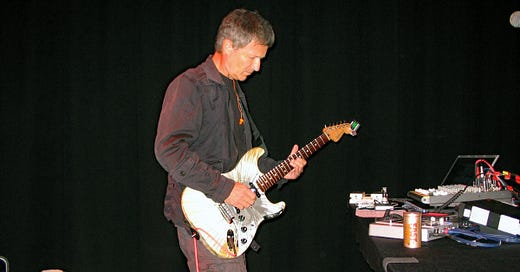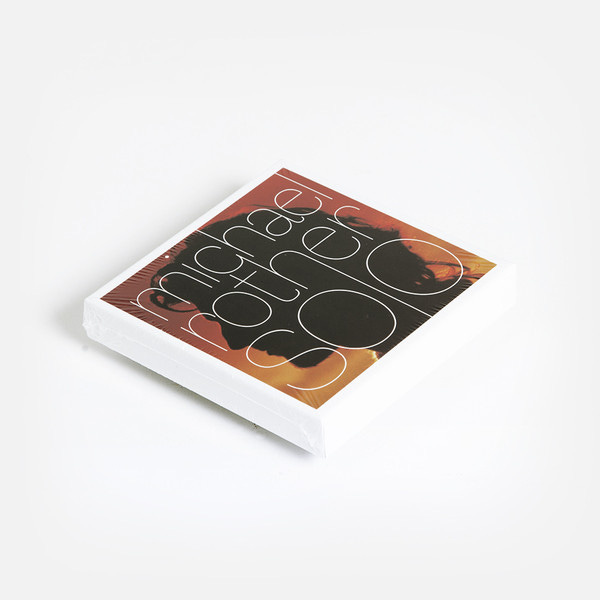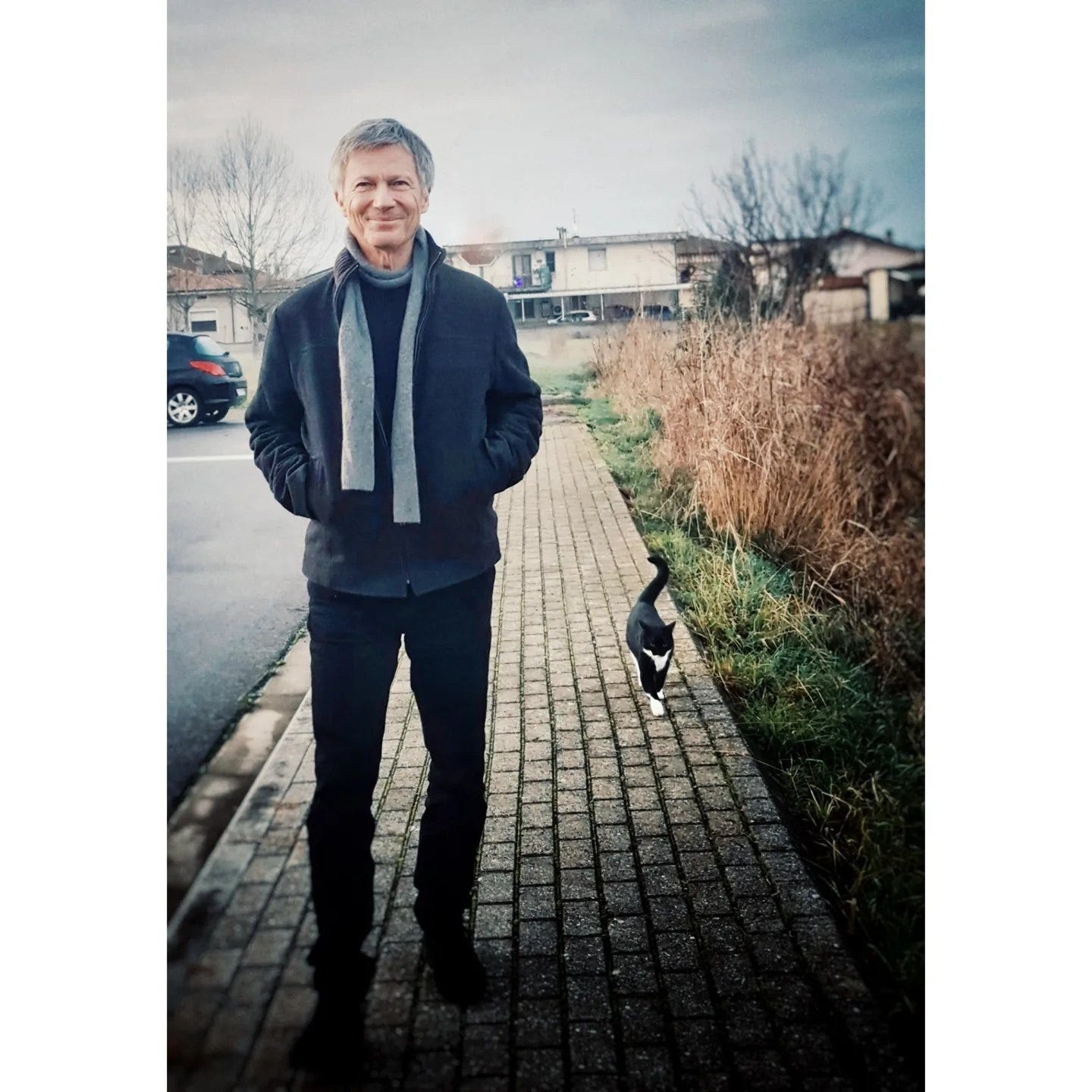Neuguitars 2024 #4: The augmented sound of Michael Rother's guitar
Talking about krautrock, ambient music and "augmented guitar"
Official Website of Michael Rother
Michael Rother is probably one of the most “oblique” musicians within the krautrock genre. Born in Hamburg on 2 September 1950, he began his career within the band Spirits of Sound and then joined Kraftwerk in 1971 as guitarist.
A role that, perhaps, was too small for him; in fact, shortly after, Rother left the band to found, together with the drummer Klaus Dinger (whom he had met during his time in Kraftwerk), Neu!, an experimental and seminal duo of absolute importance, whose project continued until 1975.
Previously Rother had also founded, in 1973, together with Cluster (Hans-Joachim Roedelius and Dieter Moebius) and Brian Eno, a band called Harmonia with the publication of two albums before disbanding in 1976. In the same period, starting from the end of the 1970s, Rother began releasing LPs under his own name: “Flammende Herzen” (1977), “Sterntaler” (1978) and “Katzenmusik” (1979), all featuring drums from Can drummer Jaki Liebezeit. Further releases included “Fernwärme” (1982), “Lust” (1983), “Süssherz und Tiefenschärfe” (1985) and “Traumreisen” (1987). Rother bought back the rights to these releases in the late 1990s and re-released versions on CD. What caught my attention was the first CD box, entitled “Michael Rother Solo”, containing 5 CDs: "Flammende Herzen" (1977), “Sterntaler” (1978), “Katzenmusik” (1979), “Fernwärme” (1982 ) and the CD with the soundtracks of the films "The Robbers" and "Houston"; produced in 2019 by Grönland Records and defined by Mark Prendergart in his book “The Ambient Century” as “exotic ambient plateaux”.
I don't think Prendergart is wrong in his definition. The first four CDs seem, in fact, to be a single sound flow, developed over the course of four different albums in which Rother creates an ambient trance with his guitar, aided by the precise and relentless rhythm provided by Jaki Liebezeit, drummer of Can, another krautrock legend .
Listened to today, almost fifty years later, these works may seem a little naive. The reasons are different. First of all the sound. I think the sound of these albums today might seem a bit naive, firstly because the underlying technology is now outdated by the electronics available today. Secondly, because the genre has undergone such an acceleration and evolution that Rother's "exotic ambient", based on small musical cells repeated with slow progressive variations, has also been stylistically surpassed by more complex and articulated structures.
But these albums are very interesting and should not escape the attention of an attentive listener. They are a precise testimony of an intense creative era and of a different path of evolution of the guitar, at the time the main instrument of pop culture, towards the form of an "augmented" instrument, capable of generating sounds, styles and visions radically different from those set by the company. I believe that Rother was one of the first to carefully and precisely explore the potential of an instrument capable of going beyond, not only its acoustic version, but also the "normal" electric sound defined by the rock genre. His musical investigation seems to aim not only at discovering new sounds, but also at new stylistic and technical forms in which electronics have an essential part in trying to overcome the "physical" limits of the guitar itself.
These embryonic experiments are now the common heritage of today's guitarists, who continue along the path indicated by Rother, but also by Robert Fripp and Manuel Göttsching. Listening to this “Michael Rother Solo” box again today allows us to better frame this evolution in its evolutionary and historical path and understand the personal stylistic growth of Rother himself. And the music is so beautiful.
Rother today seems to enjoy this historic role. On December 28, 2023 he published this photo on his Facebook profile. A smiling seventy-three year old man followed by a cat. With these words: “Grateful for the melodies of 2023. As I stroll into the new year, I'm reminded that life's symphony is sweeter when shared. Here's to making new friends along the road, both human and feline. In these challenging times where we mostly feel helpless and overwhelmed witnessing the horrors of wars and the suffering of so many innocent people, the least we can do is stick together with kindness and compassion.”







I love Rother and Neu!, thanks for this beautiful reminder of his music!
Just a very minor detail correction regarding Harmonia. Eno was not an actual part of the group. It was just Roedelius, Moebius, and Rother. Eno joined them once live in 1974, and then came into the picture again in 1976, when Harmonia had already broken up, reuniting the trio for his visit in Forst, and making music with them which later got released as "Harmonia '76 - Tracks & Traces". But he's not on the two original Harmonia albums.